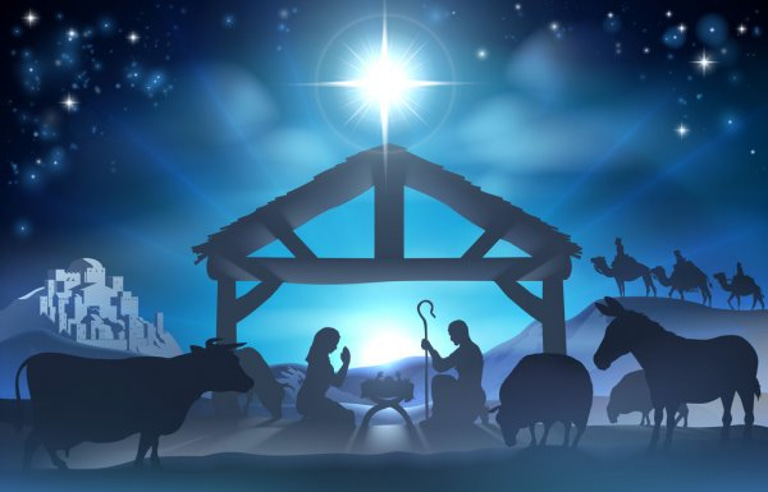The Ultimate Insight Guide to the Biblical Nativity Story
Unpack the Nativity story. Learn about angelic messages, shepherd meanings, & Mary's strong faith. Explore Jesus' true birth now.
Grace Callahan
3/2/202560 min read
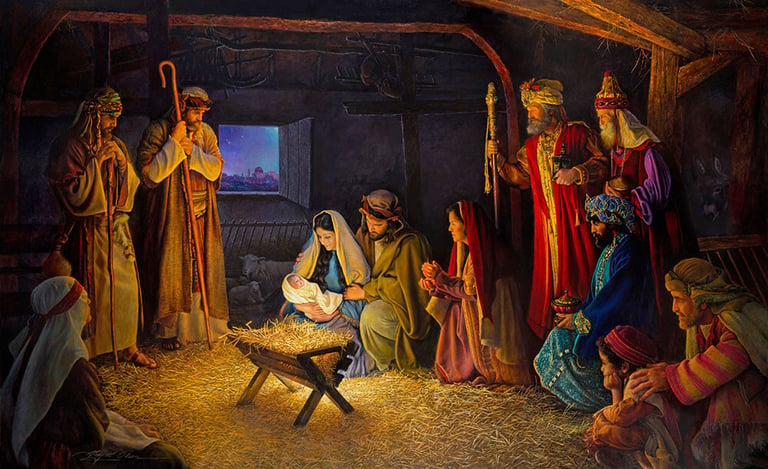

Introduction
The Nativity story changed the world, shaping beliefs, traditions, and our understanding of history. But beneath the familiar retelling lies a story rich with depth and wonder. Join us as we explore the people, ancient prophecies, and historical context surrounding Jesus' birth. Together, we'll unravel the meaning behind time-honored traditions and sacred texts
Mary’s Role in the Nativity: Faith, Challenges, and Theological Significance
Mary’s presence in the Nativity story is nothing short of extraordinary. We often sanitize her experience, reducing her to a serene figure in a manger scene, but the reality? It was anything but easy.
A Radical Yes: Mary’s Faith in Action
When the angel Gabriel appeared to Mary (Luke 1:38), her response—"Let it be to me according to your word"—wasn’t just a passive acceptance. It was an act of radical faith. Imagine being a teenage girl in first-century Israel, hearing that you, an unwed virgin, would bear the Messiah. How does one even process that? Yet, Mary’s response wasn’t fear, negotiation, or hesitation. It was immediate trust.
And let’s not gloss over this: faith like that doesn’t happen in a vacuum. Mary must have already had an intimate relationship with God, shaped by deep spiritual wisdom beyond her years. She wasn’t just chosen randomly—she was prepared.
The Social Cost: Shame, Isolation, and Risk
We often romanticize Mary’s role, but let’s get real—saying yes to God came with devastating social consequences. In a culture where pregnancy outside of marriage could lead to public disgrace—or worse, execution—her "yes" put everything on the line.
Reputation? Gone. No one in Nazareth was going to believe a teenage girl got pregnant by the Holy Spirit.
Marriage? At risk. Joseph initially planned to divorce her quietly (Matthew 1:19), which tells us how scandalous this was.
Life? In danger. According to Jewish law, she could have been stoned for adultery.
This wasn’t a fairytale moment. It was a lonely, terrifying path. And yet, she embraced it.
The Early Church and Mary’s Theological Role
The early Church didn’t just see Mary as the mother of Jesus; they recognized her as the Theotokos—the "God-bearer." This wasn’t just a title of honor; it was a theological declaration. If Jesus was fully God and fully man, then Mary wasn’t just bearing a prophet—she was carrying the Divine in human form. That’s mind-blowing.
Early Church fathers like Augustine and Irenaeus saw Mary as the "new Eve"—where Eve’s disobedience brought sin, Mary’s obedience ushered in salvation. Her role wasn’t passive; she was an active participant in God’s redemptive plan.
Why Mary’s Story Still Matters
Mary’s journey isn’t just a historical event—it’s deeply relevant. How often does God ask us to step into something that makes no sense, risks our reputation, or costs us everything? Faith isn’t about comfort. It’s about trust, even when the path is unclear.
Mary’s story reminds us that obedience to God can be costly—but it also brings unimaginable grace. So, the question isn’t just, "Do we admire Mary?" It’s, "Are we willing to trust God like she did?"
The Magnificat: A Song of Hope, Justice, and Divine Reversal
Mary’s Magnificat (Luke 1:46–55) isn’t just a sweet hymn of praise—it’s a bold, revolutionary anthem. This is no gentle lullaby; it’s a radical declaration that God’s kingdom upends the world’s power structures. Somehow, we’ve managed to domesticate it, stripping it of its raw, political, and deeply theological force. But read it carefully, and you’ll see: Mary isn’t just rejoicing—she’s announcing a divine upheaval.
A Revolutionary Song: The Overturning of Power
When Mary proclaims, “He has brought down the mighty from their thrones and exalted those of humble estate” (Luke 1:52), she isn’t speaking metaphorically. She’s declaring that God is in the business of overthrowing unjust systems. The hungry will be filled, the rich sent away empty. The proud will fall, the lowly will rise. This isn’t just personal piety—it’s a manifesto of divine justice.
And let’s not forget who’s saying this. Mary is a teenage girl, poor, pregnant, and marginalized in a society that valued women primarily for their ability to bear sons. Yet here she is, standing in the prophetic tradition, proclaiming that God is flipping the world order upside down. No wonder some governments throughout history have banned public recitations of the Magnificat—it’s dangerous theology for the oppressors.
Echoes of Hannah’s Prayer: Old Testament Roots
Mary’s song isn’t born in a vacuum. It echoes Hannah’s prayer in 1 Samuel 2:1–10, where another unexpected mother—long barren, then miraculously pregnant—praises God for lifting up the lowly and toppling the arrogant. The parallels are striking:
Hannah: “The Lord makes poor and makes rich; He brings low and He exalts” (1 Samuel 2:7).
Mary: “He has put down the mighty from their thrones, and exalted those of low degree” (Luke 1:52).
Both women recognize the same truth: God isn’t just a distant deity handing out blessings—He’s actively engaged in dismantling injustice and elevating the oppressed.
The Magnificat’s Theological and Social Implications
Theologically, the Magnificat is a preview of Jesus’ mission. Mary’s words foreshadow the Beatitudes (Luke 6:20–26), where Jesus preaches that the poor, hungry, and mourning will be blessed, while the rich and satisfied will face judgment. The kingdom of God doesn’t function like the kingdoms of this world.
Socially, this song challenges us to rethink our own positions. Are we aligned with the powerful who hoard wealth and status, or with the lowly whom God promises to lift up? The Magnificat isn’t just a feel-good passage for Advent; it’s a call to action. If we take it seriously, it demands that we advocate for justice, care for the poor, and refuse to accept systems that crush the vulnerable.
Why the Magnificat Still Matters
Mary’s song isn’t ancient history—it’s still relevant today. It speaks to the single mother struggling to feed her children, the refugee seeking safety, the oppressed waiting for justice. It reminds us that God sees, God cares, and God is not neutral in the face of injustice.
So, the real question is: Do we sing the Magnificat with Mary, believing in the radical justice of God? Or do we resist its implications, afraid of what it might mean for our own comfort?
Angels & Announcements
Angels in the Nativity: Divine Messengers and Cosmic Announcements
Angels in the Nativity story aren’t just decorative figures in Christmas pageants—they are pivotal players in God’s redemptive plan. Their presence isn’t random or sentimental; it’s intentional, powerful, and deeply symbolic. Whether delivering life-altering news to Mary and Zechariah or announcing Christ’s birth to lowly shepherds, angels act as divine heralds, linking heaven and earth in a moment of cosmic significance.
Gabriel’s Visit: Divine Announcements That Changed Everything
The angel Gabriel appears twice in Luke’s Nativity account—first to Zechariah (Luke 1:11–20) and then to Mary (Luke 1:26–38). While both visits involve miraculous pregnancies and divine missions, the responses couldn’t be more different.
Zechariah, an elderly priest, doubts Gabriel’s message that his wife Elizabeth will bear a son (John the Baptist). His skepticism earns him temporary silence—a striking consequence, considering his role as a spiritual leader.
Mary, a teenage girl, believes despite the impossibility of a virgin birth. She asks a logistical question ("How will this be?"), but her response is ultimately one of faith: "Let it be to me according to your word."
The contrast is profound. The seasoned priest struggles to accept God’s intervention, while the young, obscure girl trusts immediately. It’s as if Luke is subtly reminding us: faith isn’t about status or knowledge—it’s about openness to God’s will.
Angels in Biblical Narratives: More Than Messengers
Angels appear throughout the Bible, often at critical moments of divine intervention. They aren’t fluffy, harp-playing beings; they are formidable, fear-inducing messengers of God’s authority.
In Genesis 19, angels warn Lot before the destruction of Sodom.
In Daniel 10, an angel battles spiritual forces for weeks before delivering a message.
In Matthew 28, an angel rolls back the stone at Jesus' empty tomb, sparking fear among Roman soldiers.
By the time they appear in the Nativity story, angels have an established biblical role: they show up when God is about to shake the world. And what bigger world-shaking event is there than the Incarnation?
The Angelic Proclamation to the Shepherds: An Upside-Down Announcement
When Jesus is born, the first public announcement isn’t made to kings, priests, or scholars—it’s given to shepherds (Luke 2:8–14). This is shocking. Shepherds in first-century Israel weren’t romanticized figures; they were lower-class, often uneducated, and considered unclean under Jewish purity laws. Yet, heaven’s grandest declaration—"Glory to God in the highest, and on earth peace to those on whom His favor rests!"—comes to them.
This isn’t accidental. The angels' appearance to shepherds foreshadows Jesus’ entire ministry:
He will spend time with outcasts, sinners, and the overlooked.
His kingdom will be for the humble, not the powerful.
The good news isn’t reserved for the elite—it’s for everyone, starting with those society deems insignificant.
Why the Angels Matter Today
The angels in the Nativity remind us that God disrupts expectations. He speaks to the overlooked, works through the unlikely, and delivers His most profound messages to those the world least expects.
And maybe that’s the point. If God sent angels to shepherds, maybe He’s still speaking in unexpected places—through the unnoticed, the marginalized, and the ordinary moments of life. The real question is: are we paying attention?
How Angelic Appearances Shaped Joseph’s and the Wise Men’s Journeys
Angels in the Nativity story weren’t just passive observers; they actively shaped the course of events. Without angelic intervention, Joseph might have abandoned Mary, the Magi might have unwittingly aided Herod’s plot, and the entire story could have taken a darker turn. These divine messengers didn’t just deliver news—they redirected lives, protected the innocent, and ensured God’s plan unfolded as intended.
Joseph’s Angelic Encounter: From Doubt to Devotion
Joseph doesn’t get enough credit in the Nativity story. He isn’t given a speaking role in Scripture, and yet, his actions are critical. Imagine his position—his fiancée, Mary, is pregnant, and he knows he’s not the father. In first-century Jewish culture, this wasn’t just embarrassing; it was grounds for legal punishment. He had every right to end the engagement, and initially, that’s exactly what he planned to do—"being a just man and unwilling to put her to shame, he resolved to divorce her quietly" (Matthew 1:19).
Then, an angel appears in a dream: “Do not be afraid to take Mary as your wife, for that which is conceived in her is from the Holy Spirit” (Matthew 1:20). This wasn’t just reassurance; it was a direct command. Joseph had a choice—ignore the dream and walk away or trust the divine message and step into uncertainty.
He chose faith. No questions, no hesitations—just obedience. Joseph’s story proves that faith isn’t always about dramatic speeches or visible miracles. Sometimes, it’s quiet, steadfast trust in God’s direction, even when it doesn’t make sense.
The Magi’s Warning Dream: A Divine Detour
The Wise Men—or Magi—had their own supernatural guidance. After visiting the newborn Jesus and presenting their famous gifts, they likely assumed their journey was over. But then, they received a divine warning in a dream: “Do not return to Herod” (Matthew 2:12).
Without this intervention, they would have unknowingly handed Jesus over to a murderous king. Instead, they altered their route, frustrating Herod’s plans and buying time for the Holy Family to escape. Once again, angels—or in this case, a dream directly from God—shaped history.
Angels as Divine Messengers in the Nativity Story
Angels in the Nativity weren’t just making grand announcements; they were orchestrating events to protect and fulfill God’s plan:
To Zechariah: Announcing John the Baptist’s birth (Luke 1:13).
To Mary: Proclaiming the virgin birth (Luke 1:28–38).
To Joseph: Affirming Mary’s innocence and directing their escape to Egypt (Matthew 1:20; 2:13).
To the shepherds: Declaring Jesus’ birth (Luke 2:9–14).
To the Magi (via a dream): Warning them to avoid Herod (Matthew 2:12).
Why This Still Matters Today
These angelic encounters remind us that God is actively involved in the details of life. Sometimes, His guidance comes in dramatic, undeniable ways. Other times, it’s a quiet nudge—a dream, an intuition, a moment of clarity we can’t quite explain. The question isn’t whether God is still speaking; it’s whether we, like Joseph and the Magi, are willing to listen and follow, even when the path ahead is unclear.
Shepherds & Symbolism
Why Shepherds? The Unexpected First Witnesses to the Nativity
When we think about the Nativity, we often picture shepherds in a peaceful field, gazing in awe as angels fill the night sky. But have we ever stopped to ask—why shepherds? Why would God choose them, of all people, as the first to hear the greatest news in history? The answer is layered with social, theological, and symbolic meaning.
The Lowly Status of Shepherds in First-Century Judea
Shepherds weren’t romanticized figures in ancient Jewish society. They were rough, unpolished, and often looked down upon.
Social outcasts: Due to the nature of their work—living outside city walls, constantly in contact with animals, and rarely attending temple services—shepherds were often considered ritually unclean. This meant they were on the fringes of religious life.
Economically poor: Unlike landowners or merchants, shepherds were typically hired hands, barely scraping by. They weren’t the type to have political influence or social power.
Mistrusted: Some ancient Jewish writings suggest shepherds were often seen as dishonest or unreliable. Their nomadic lifestyle meant they weren’t rooted in a stable community, making them outsiders in every sense.
In short, shepherds weren’t the kind of people anyone would expect to receive history’s most important birth announcement. But that’s exactly the point.
God’s Choice: The First Witnesses to Jesus’ Birth
The angels’ appearance to the shepherds wasn’t just an act of divine PR—it was a theological statement.
A foreshadowing of Jesus’ mission: Jesus consistently prioritized the lowly, the outcasts, and the overlooked. He ate with sinners, touched lepers, and preached that the last would be first. The fact that shepherds—outsiders in society—were the first to meet Him aligns perfectly with His future ministry.
A symbol of the Good Shepherd: Jesus would later call Himself the Good Shepherd (John 10:11), emphasizing His care for the lost and vulnerable. In choosing actual shepherds as the first to meet Him, God was reinforcing this identity from the very beginning.
An invitation to the ordinary: If the angels had appeared to priests, nobles, or scholars, it might have sent the message that salvation was reserved for the religious elite. Instead, by choosing shepherds, God made it clear—this Messiah was for everyone.
The Contrast Between the Shepherds and the Magi
The Nativity presents two vastly different groups coming to worship Jesus:
Shepherds: Poor, Jewish, uneducated, socially insignificant. They represent humility, simplicity, and God’s heart for the overlooked.
Magi: Wealthy, Gentile scholars, likely from Persia. They represent wisdom, influence, and the recognition of Christ by the nations.
The contrast is striking—one group comes from the lowest rung of Jewish society, the other from the upper echelons of foreign power. Yet both bow before the same King. This contrast reinforces a powerful truth: Jesus came for all people, regardless of status, background, or nationality.
Why This Still Matters Today
The shepherds’ role in the Nativity reminds us that God’s kingdom isn’t built on human hierarchies. He doesn’t prioritize the wealthy, the powerful, or the outwardly religious. Instead, He chooses the humble, the overlooked, and the unexpected.
And maybe that’s the real question for us—are we willing to see ourselves in the shepherds? Are we willing to recognize that God’s greatest invitations often come to the ordinary and the unworthy? Because if He chose them, He can choose us too.
Shepherd Imagery in Scripture: From David to Jesus as the Good Shepherd
The image of a shepherd runs deep in Scripture, woven into the fabric of Jewish identity long before Jesus declared, “I am the Good Shepherd” (John 10:11). Shepherding wasn’t just an occupation—it was a symbol of leadership, care, and divine authority. From David tending his father’s flock to Jesus laying down His life for His sheep, this imagery tells a profound story of God’s relationship with His people.
The Shepherding Tradition in Jewish History
Shepherds weren’t just lowly laborers in ancient Israel—they were at the heart of the nation’s history.
Abraham, Isaac, and Jacob were all nomadic shepherds. Their livelihood depended on leading flocks through the wilderness, much like God would later lead Israel.
Moses, before becoming Israel’s deliverer, was a shepherd in Midian (Exodus 3:1). He spent 40 years tending sheep before God called him to shepherd His people out of Egypt.
David, Israel’s greatest king, started as a shepherd boy (1 Samuel 16:11). He was an unlikely choice—young, overlooked, and armed only with a slingshot—yet God chose him to lead His people, a direct foreshadowing of the Messiah to come.
It’s no accident that many of Israel’s greatest leaders were shepherds first. Shepherding wasn’t just a job—it was a training ground for kingship.
Jesus as the Good Shepherd (John 10:11-18)
When Jesus declared, “I am the Good Shepherd,” He wasn’t just using poetic language—He was making a radical statement about His identity and mission.
A stark contrast to bad shepherds: Throughout the Old Testament, Israel’s leaders (priests, kings, and prophets) were often called “shepherds.” Many failed in their duty, neglecting or exploiting their people. Ezekiel 34 is a scathing indictment against these corrupt leaders, but it also carries a promise: “I myself will be the shepherd of my sheep” (Ezekiel 34:15). Jesus is the fulfillment of that promise.
Laying down His life for the sheep: Unlike a hired hand who runs when danger comes, Jesus says the Good Shepherd “lays down his life for the sheep” (John 10:11). He isn’t just a protector—He’s a sacrificial Savior. This is a direct foreshadowing of the cross.
Knowing His sheep personally: Jesus says, “I know my sheep, and my sheep know me” (John 10:14). This isn’t distant leadership—it’s intimate, relational care. Unlike earthly kings who rule from palaces, Jesus walks among His people, calling them by name.
Psalm 23: A Messianic Foreshadowing
Perhaps the most famous shepherd passage in Scripture, Psalm 23, written by David, takes on an even deeper meaning in light of Jesus:
“The Lord is my shepherd, I shall not want.” → Jesus provides for His people, just as a shepherd provides for his flock.
“He leads me beside still waters; He restores my soul.” → Jesus offers rest and spiritual renewal (Matthew 11:28).
“Even though I walk through the valley of the shadow of death, I will fear no evil.” → Jesus walks with us, even through suffering and death.
“You prepare a table before me in the presence of my enemies.” → Jesus, the Good Shepherd, ultimately defeats sin and death, securing victory for His people.
Psalm 23 isn’t just comforting poetry—it’s a prophetic glimpse into the Messiah’s role as the ultimate Shepherd-King.
Why This Matters Today
Shepherd imagery in Scripture isn’t just historical or symbolic—it’s deeply personal. If Jesus is the Good Shepherd, that means:
We are His sheep—and let’s be honest, sheep aren’t the brightest animals. They wander. They get lost. They need constant care. The good news? We have a Shepherd who never abandons us.
His leadership isn’t harsh or domineering. It’s tender, sacrificial, and rooted in love.
No matter how lost we feel, the Good Shepherd always comes after His sheep (Luke 15:4-7).
The question isn’t whether we have a Shepherd—the question is, are we listening to His voice?
Apocryphal / Non-Canonical Insights
The Protoevangelium of James: How Apocryphal Texts Influenced Nativity Tradition
If you’ve ever heard that Mary was raised in the Temple or that Joseph was an older widower with children from a previous marriage, you didn’t get that from the Bible. These details—and many others that have shaped Christian Nativity traditions—come from The Protoevangelium of James, a second-century apocryphal text.
Though not included in the biblical canon, this text had an outsized influence on how people envision Mary, Joseph, and the birth of Jesus. So why wasn’t it considered Scripture? And how much of it should we take seriously?
What the Protoevangelium of James Says About Mary’s Birth and Childhood
Unlike the Gospels, which begin Mary’s story at the Annunciation, the Protoevangelium of James (also called the Infancy Gospel of James) provides a backstory that later shaped Catholic and Orthodox traditions. Some key claims:
Mary’s miraculous conception: Her parents, Joachim and Anna, were elderly and childless (echoing stories of Sarah and Hannah). Anna receives a divine message announcing Mary’s birth as a special act of God.
Mary’s upbringing in the Temple: At age three, Mary is taken to the Temple, where she is raised in purity and holiness—essentially being prepared to become the Mother of God.
Joseph as an elderly widower: Instead of being a young betrothed, Joseph is portrayed as an older widower with children, chosen by divine sign to care for Mary while preserving her perpetual virginity.
A miraculous birth: Unlike the humble stable birth described in Luke’s Gospel, this text describes Mary giving birth in a cave, accompanied by supernatural light and midwives who verify her post-birth virginity.
Some of these details—like Mary’s parents’ names—became widely accepted in Christian tradition, despite having no biblical basis. Others, like Joseph being elderly, influenced the idea that Jesus’ “brothers” were actually step-siblings rather than biological children of Mary.
The Influence of Non-Canonical Texts on Christian Tradition
Apocryphal writings like the Protoevangelium of James shaped Christian imagination, art, and even doctrine, particularly in Catholic and Orthodox traditions.
Feast Days and Traditions: The feast of The Presentation of Mary (celebrated on November 21) is based entirely on the idea that she was raised in the Temple—something found nowhere in Scripture.
Depictions of the Nativity: Many medieval and Renaissance Nativity paintings place the birth of Christ in a cave rather than a stable, following the apocryphal account.
Perpetual Virginity of Mary: The idea that Joseph was an elderly, non-romantic guardian rather than a typical husband helped support the doctrine of Mary’s perpetual virginity.
Even though these stories weren’t considered Scripture, they became part of Christian devotional life, shaping how believers viewed the Holy Family.
Why the Church Did Not Canonize the Protoevangelium of James
If this text influenced so much of Christian tradition, why wasn’t it included in the Bible?
Late composition: Written around A.D. 150, it was too late to be apostolic—meaning it wasn’t penned by an eyewitness or someone closely connected to Jesus or His disciples.
Theological embellishments: The early Church was careful about adding supernatural elements not found in the apostolic tradition. The Protoevangelium of James reads more like legend-building than eyewitness testimony.
Inconsistencies with Scripture: While the canonical Gospels emphasize Jesus’ humble birth and Mary’s ordinary background, this text presents a more miraculous, almost mythic version of events.
Church leaders rejected it: While some early Christians found it valuable for devotional reasons, major Church figures like Jerome and Origen dismissed it. By the time the biblical canon was solidified, it was excluded.
Why This Matters Today
The Protoevangelium of James is fascinating—not because it’s Scripture, but because it shows how early Christians tried to fill in the gaps left by the Gospels. It reminds us how much of our understanding of the Nativity is shaped by tradition rather than Scripture.
So what should we do with it?
Recognize its historical influence without treating it as divinely inspired.
Be mindful of how much tradition influences our perception of the Nativity.
Always go back to Scripture as the primary source of truth.
At the end of the day, the Protoevangelium of James may not be in the Bible, but its echoes are still felt in Christian tradition. Whether that’s a good thing or not? That’s for each believer to wrestle with.
Legends of Midwives at the Birth: Early Christian Folklore
In the Nativity story, we often focus on the central characters—Mary, Joseph, the infant Jesus, and the angelic proclamations—but there are also lesser-known figures who play a fascinating role in early Christian folklore. One such group includes the midwives who, according to several apocryphal texts, were present at Jesus' birth and played an integral role in confirming His miraculous nature. While these stories didn’t make it into the canonical Bible, they had a significant influence on medieval Christianity and Eastern Orthodox traditions.
Stories of Salome and the Midwives in Nativity Apocrypha
The Protoevangelium of James isn’t the only apocryphal text to introduce additional characters to the Nativity. One of the most notable figures is Salome, a midwife who, in some accounts, attends to Mary during her labor and is involved in confirming Jesus’ miraculous birth.
The Midwife’s Role in the Birth: According to the Protoevangelium of James, Salome is called to attend Mary’s birth, but she is initially skeptical about the virgin birth. When she tries to touch Mary, questioning the claim of her virginity, her hand is said to wither, and she cries out in distress. It is only when the infant Jesus is presented to her and miraculously heals her that Salome believes in the miracle of the virgin birth.
The Midwives’ Testimony: Other apocryphal texts add to the idea of midwives present at Jesus’ birth. In some versions of the story, the midwives witness a supernatural light or a miraculous sign that affirms the divine nature of Jesus' birth. Their testimonies, while not part of the canonical Gospel narratives, emphasize the sacredness and wonder surrounding the birth.
These stories give a more human, relatable element to the Nativity narrative, emphasizing the miraculous nature of Jesus' birth not just to royal or angelic witnesses but to ordinary people who would have been involved in childbirth.
How These Legends Influenced Medieval and Eastern Orthodox Traditions
As much as these midwife legends didn’t make it into the official Gospel accounts, they deeply influenced Christian culture, particularly in the medieval and Eastern Orthodox traditions.
Devotional Practices: The midwives’ stories, especially that of Salome’s healing, became a focal point for devotion to Mary and the miraculous nature of Jesus’ birth. In medieval Europe, there was a deep interest in portraying Mary as the ideal mother, and the midwife’s role in these stories further reinforced her purity and divine protection. The miracles surrounding the birth were used to highlight the sanctity of motherhood and childbearing.
Iconography: In Eastern Orthodox art, the Nativity scene is rich with detail. Midwives like Salome often appear in depictions, contributing to the overall narrative of miraculous and divine intervention. The midwives’ presence in these works reminds the faithful of the tangible, human aspect of Jesus’ birth and His divine nature being affirmed by those who were otherwise outsiders to the sacred family.
Feasts and Traditions: Some traditions have developed feast days to honor these figures, including the midwives, especially Salome. In Orthodox Christianity, the Feast of the Nativity of the Theotokos (Mary’s birth) became an important occasion, and the legends surrounding Salome were incorporated into homilies and prayers, reinforcing the miraculous nature of the entire event.
These influences show how the church creatively wove these apocryphal stories into devotional life, enriching the believer’s connection to the Nativity event.
Evaluating Historical Credibility vs. Devotional Storytelling
As appealing as these legends are, it’s important to evaluate them in the context of their historical credibility.
Theological vs. Historical: These stories were not written to serve as historical accounts, but rather as theological and devotional tools. The Protoevangelium of James and similar writings were meant to enhance the understanding of Mary’s purity and Jesus’ divine nature, not necessarily to provide a factual retelling of events.
The Role of Apocryphal Texts: Many apocryphal texts were written centuries after the events they describe, often in regions where oral traditions and local legends had blended with Christian theology. While they may not be factually reliable, they do reflect the theological and devotional needs of early Christian communities. These texts served to reinforce the belief in Jesus’ miraculous nature and the divine protection of Mary and Joseph.
Spiritual Significance Over Historical Accuracy: These midwife stories—while lacking direct historical evidence—offer insight into how the early Church understood and wanted to portray the significance of Jesus’ birth. They tell us more about the community’s spiritual imagination and the lengths to which they went to honor the sacred mystery of the Nativity.
Why This Matters Today
The legends of the midwives offer us an important reminder: while not all stories surrounding the Nativity are found in the Bible, they are still part of the larger Christian tradition. These legends give texture and depth to our understanding of the Nativity, particularly when it comes to how ordinary people—like midwives—would have been impacted by the miraculous birth.
Inspiration for Faith: The midwife’s story, especially Salome’s miraculous healing, reflects a theme that’s still powerful today: the transformative power of encountering the divine. Just as Salome’s skepticism turned to faith through a personal miracle, so too can our doubts be transformed when we open ourselves to God’s revelation.
A Reminder of Humility: These stories challenge us to look beyond the glamorous aspects of the Nativity and recognize the humble, ordinary figures who played their parts. Even in the most divine of moments, God chooses the humble to bear witness to His greatness.
So while we may not consider the midwife stories to be “historically true,” their spiritual power and influence on Christian culture remain undeniable. They shape how we view the Nativity—not as a mere event in history, but as a transformative moment that touches the hearts of all who believe.
Historical/Archaeological Deep Dives
The Census of Quirinius: Debates Over the Historical Timing of Jesus' Birth
One of the most debated aspects of the Nativity story is the reference in the Gospel of Luke to a census conducted by Quirinius, the governor of Syria, which led Mary and Joseph to travel to Bethlehem for Jesus' birth (Luke 2:1–5). For centuries, scholars and critics have wrestled with this passage, particularly because there seems to be a discrepancy between the timing of Quirinius' census and the traditional dating of Jesus' birth. So, what’s the issue? And how can we reconcile the apparent historical contradictions?
The Controversy Over Luke’s Reference to a Census Under Quirinius
The Gospel of Luke places the birth of Jesus during a census that was ordered while Quirinius was governor of Syria. However, this poses a significant problem for those trying to harmonize biblical accounts with known historical events:
Timing Issues: Quirinius is known to have been appointed governor of Syria around 6 AD, but historical sources suggest that Jesus’ birth is traditionally dated around 4-6 BC. This creates a major challenge because a census under Quirinius in 6 AD would seem too late for the birth of Jesus, who was supposed to have been born during the reign of King Herod (who died in 4 BC).
No Census in 4–6 BC: There are no records of a census during that time, and Quirinius’ official role as governor was not recognized in the earlier years of his career, raising further doubts about the historical accuracy of the claim. Critics of the biblical account often use this discrepancy to question the reliability of Luke’s narrative.
So, does this mean the Gospel of Luke is wrong? Or is there a way to reconcile these two pieces of evidence?
Possible Explanations for the Timeline Discrepancies
Despite the apparent contradiction, there are several possible explanations that scholars have proposed to harmonize Luke's account with the historical record:
A Census in Two Phases:
Some scholars argue that Luke may be referring to two separate censuses. While the well-known census under Quirinius occurred in 6 AD, it’s possible that a preliminary census was carried out earlier during the reign of Herod, which would have been part of a broader effort by the Roman Empire to organize its provinces. This idea is based on the assumption that the Roman government may have conducted smaller, local censuses prior to the major census in 6 AD.Different Quirinius:
Another explanation suggests that there may have been two Roman officials named Quirinius, with one serving before the widely known 6 AD census. The earlier Quirinius might have been involved in overseeing a census or population registration as part of an imperial policy, but historical sources haven’t preserved this information. This theory posits that Luke refers to this earlier, lesser-known Quirinius.Translation and Interpretation Issues:
Some scholars suggest that the term “governor” (or “first census”) used in Luke 2:2 could have different meanings depending on how it is interpreted. It’s possible that Luke used a broader term that could refer to other administrative or regional roles Quirinius might have had at the time, not just his later, well-documented governorship.A Theological Emphasis Rather Than a Historical One:
Another perspective is that Luke’s focus was not primarily on providing an exact historical timeline but on using the census as a narrative device to establish that Jesus’ birth occurred in Bethlehem, fulfilling prophecy (Micah 5:2). If we understand Luke’s account as more theological than chronological, the specifics of the timing may have been less important than the broader message Luke intended to convey.
The Broader Historical Context of Roman Censuses
Roman censuses were common in the empire, designed to assess the population for taxation and military service. Understanding their role can shed light on the context of Luke’s account:
Frequent Roman Censuses: The Roman Empire conducted censuses throughout its provinces, typically for taxation purposes. In fact, there were regular censuses every five years, and governors often oversaw these activities. The practice of requiring people to return to their ancestral homes for registration was not out of the ordinary.
The Censuses of Augustus: The Roman Emperor Augustus, who reigned during the time of Jesus’ birth, was known for his extensive administrative reforms, including censuses. While the specific census under Quirinius is debated, there were other censuses carried out during Augustus' reign, suggesting that Luke’s reference to a census might be a general reference to the imperial policies of the time.
Historical Records of Quirinius: Quirinius was a notable figure in Roman history, known for his role as the governor of Syria and for his involvement in a later census in 6 AD. Some historical records, such as those from the Jewish historian Josephus, document Quirinius’ role in the governance of Syria and the aftermath of Herod's death. However, there’s no clear evidence that Quirinius was governor at an earlier time, which only adds to the confusion.
Why This Debate Matters Today
This ongoing debate highlights the intersection of faith, history, and the search for truth. It’s not just about determining whether Luke’s account is accurate; it’s about understanding how the Gospel writers navigated their world and how we, as modern readers, engage with their work.
Faith vs. Historical Evidence: For believers, the core message of the Nativity isn’t hinged on exact historical details but on the theological significance of the event—God entering the world in the person of Jesus Christ. For historians, the accuracy of dates and events matters, but the bigger question may be what Luke intended to communicate beyond precise historical details.
Embracing the Mystery: In some ways, this debate reminds us of the complexity of ancient texts. The gaps in historical records, the lack of absolute clarity, and the different ways ancient writers worked can make the search for answers challenging. But rather than dismissing these complexities, we can approach them with curiosity, allowing room for both faith and historical inquiry to coexist.
Ultimately, whether or not we solve the Quirinius puzzle doesn’t diminish the profound message of the Nativity story: the birth of Jesus Christ, who came to bring salvation to all, remains the central truth of the Christian faith.
Bethlehem Then and Now: Archaeological Clues to the First-Century Town
Bethlehem—most famously known as the birthplace of Jesus—has long been a subject of fascination for both believers and historians alike. Archaeological findings continue to illuminate the town's status during the time of Jesus and provide insights into the living conditions, the cultural context, and the environment in which the Nativity occurred. From ancient homes to the Church of the Nativity, Bethlehem has much to reveal about its past.
What Archaeology Reveals About Bethlehem at the Time of Jesus
Archaeology helps us picture Bethlehem as it was in the first century, offering tangible clues about the town's social, economic, and religious life. Contrary to the grandeur often depicted in nativity scenes, Bethlehem was a relatively small and humble village.
Small, Agrarian Village: Bethlehem during the first century was part of the region of Judea, which was under Roman rule. The town was modest, with a population of perhaps a few hundred people. It was largely agricultural, with families relying on farming and shepherding for their livelihoods.
Roman Influence: Despite its small size, Bethlehem would have been affected by Roman rule, particularly in the way that people were taxed and the introduction of Roman infrastructure. Roman roads, for instance, would have connected Bethlehem to other towns and cities, facilitating travel (like the journey Mary and Joseph took to Bethlehem).
Hellenistic Influence: While more pronounced in larger cities like Jerusalem, some Hellenistic (Greek) influence would have trickled down into Bethlehem. You could find Greek-style pottery and some Greek inscriptions even in smaller towns. Still, Bethlehem would have been largely shaped by Jewish customs and traditions, making it an essential part of the Jewish world at the time of Jesus.
These archaeological findings give us a sense of what daily life might have been like for Mary and Joseph, in contrast to the more romanticized images often found in nativity depictions.
Ancient Jewish Homes and Possible Birth Locations
One of the most fascinating aspects of Bethlehem’s archaeology is the exploration of ancient Jewish homes, which offers clues to where Jesus might have been born. There are several theories, shaped by both archaeology and scripture, about the exact location of Jesus’ birth.
Typical First-Century Jewish Homes: Excavations of homes from the first century in Bethlehem show that they were often built with stone foundations and had flat roofs. These homes typically consisted of a main living area, with a lower level or annex used to house animals during colder months. The presence of animals would make it plausible that Jesus was born in one of these lower-level spaces, especially if there was no room in the main living area.
The Inn Debate: The idea of Mary and Joseph being turned away from an "inn" (as referenced in Luke 2:7) is a bit misleading when we consider the housing conditions of the time. Ancient Jewish homes didn’t have inns in the modern sense. Rather, they were built with a guest room (known as a “kataluma”) that would have been reserved for travelers. It's possible that Mary and Joseph stayed in a relative’s home, but the guest room was already occupied. As a result, they may have stayed in the lower level with the animals.
Cave Theories: Some researchers suggest that Jesus may have been born in a cave used as a stable, a common practice in that era. Archaeological sites near Bethlehem, including the Church of the Nativity, suggest that caves were sometimes used for livestock shelter, making this a plausible location for Jesus’ birth.
These archaeological insights challenge some of our traditional images of the Nativity and offer a more grounded, historically realistic view of what the environment might have been like.
The Church of the Nativity and Its Historical Significance
Arguably the most iconic site associated with Bethlehem is the Church of the Nativity, a place of pilgrimage for Christians around the world. Built over the traditional site of Jesus' birth, the church is both a historical landmark and a spiritual symbol.
Historical Roots: The Church of the Nativity was commissioned by Emperor Constantine in the 4th century, after the Roman Empire officially embraced Christianity. The location of the church was chosen based on an ancient tradition that placed the birth of Jesus in a cave beneath the site. Constantine’s mother, Helena, is said to have had the church built to honor Jesus' birth, and its construction solidified the significance of Bethlehem as a Christian holy site.
Archaeological Findings: Excavations beneath the Church of the Nativity have revealed that the site was used as a place of worship as far back as the 2nd century, before the church itself was built. Fragments of mosaics, ancient oil lamps, and early Christian inscriptions have been found, attesting to the importance of Bethlehem in early Christianity.
Ongoing Preservation: Today, the Church of the Nativity is a UNESCO World Heritage site. While the church has undergone many renovations and changes over the centuries, it remains a deeply significant pilgrimage destination. Its history is a testament to the early Christian belief that Bethlehem was the sacred birthplace of Jesus.
Visiting the Church of the Nativity isn’t just a historical experience; it’s a chance to connect with the centuries of tradition that have shaped the Christian understanding of Jesus' birth. The church stands as a living monument to Bethlehem’s central role in the story of salvation.
Why This Matters Today
Bethlehem, both as an ancient city and as a modern-day place of pilgrimage, continues to draw attention. The archaeological findings allow us to step back in time and consider what life would have been like in the humble village where Jesus was born. But beyond the historical significance, these discoveries help us reflect on the humility and simplicity of the Nativity story.
Connecting History and Faith: The more we learn about the physical context in which Jesus was born, the more we realize how God chose to enter the world in the most humble and unexpected way. Bethlehem, with its modest homes and simple lifestyle, underscores the message that God’s work doesn’t need grandeur or wealth to be impactful.
A Place of Reflection: For many, Bethlehem is a symbol of hope. It’s a reminder that even in the most humble settings, profound things can happen. As we reflect on the archaeological evidence and what it tells us about the first-century town, we’re invited to think about the deeper meaning of Jesus’ birth and the ways in which it continues to shape our understanding of faith, humility, and divine presence.
So, whether you're a historian, an archaeologist, or simply a believer, the discoveries in Bethlehem offer us both historical insights and spiritual reflections that continue to resonate with people around the world.
Prophecy & Fulfillment
Old Testament Prophecies About the Messiah’s Birth (Micah 5:2, Isaiah 7:14, etc.)
When we look at the birth of Jesus, it’s not just a random historical event—it’s the fulfillment of centuries-old prophecies that pointed forward to a coming Savior. These prophecies, woven throughout the Old Testament, reveal a deep and intricate plan for God’s redemptive work in the world. In the Nativity story, we see how prophecies like those in Micah and Isaiah find their fulfillment in the birth of Jesus, confirming that He was the long-awaited Messiah. So, what do these prophecies tell us? And why do they matter?
How Micah 5:2 Foretold the Messiah’s Birthplace
Micah 5:2 is one of the most specific and widely recognized prophecies concerning the Messiah’s birth. The verse says:
“But you, Bethlehem Ephrathah, though you are small among the clans of Judah, out of you will come for me one who will be ruler over Israel, whose origins are from of old, from ancient times.” (Micah 5:2, NIV)
Bethlehem's Humble Origins: Micah prophesied that the Messiah would be born in Bethlehem, a small town in Judah. In the time of Micah, Bethlehem wasn’t the prominent city it would later become in Christian tradition. It was a humble, insignificant place. So, why Bethlehem? This humble birthplace underscores the radical nature of God's plan. The Messiah wasn’t going to be born in a royal palace but in a small town, emphasizing the humility of Jesus' entrance into the world.
The Fulfillment in Jesus: The Gospel of Matthew (2:5–6) and the Gospel of Luke (2:4–7) both highlight that Jesus’ birth took place in Bethlehem, fulfilling Micah’s prophecy. The fulfillment of this prophecy is significant because it not only identifies where Jesus would be born but also ties Him to the Davidic line—Bethlehem being the birthplace of King David, the most revered king in Jewish history. Jesus, as the Messianic King, was to be from David's lineage, fulfilling God’s covenant with David.
The fact that Jesus was born in Bethlehem, as foretold in Micah, isn’t just a geographical detail—it’s a theological statement. It confirms that Jesus is the true King, born to rule and shepherd God’s people.
The Significance of Isaiah 7:14 and the Debate Over "Virgin" vs. "Young Woman"
Another key prophecy concerning the Messiah’s birth comes from Isaiah 7:14:
“Therefore the Lord himself will give you a sign: The virgin will conceive and give birth to a son, and will call him Immanuel.” (Isaiah 7:14, NIV)
The Virgin Birth: Isaiah’s prophecy is powerful, as it speaks of a virgin giving birth to a child. The term “virgin” here (Hebrew: almah) is central to the Christian understanding of Jesus' miraculous birth. Christians believe that this prophecy pointed directly to Mary, who conceived Jesus through the Holy Spirit, affirming the divinity and supernatural nature of Jesus’ birth. The fulfillment of this prophecy in the New Testament (Matthew 1:22–23) underscores that Jesus was born not by ordinary human means but by divine intervention.
The "Young Woman" Debate: However, there’s been ongoing debate over whether almah refers specifically to a virgin or simply a young woman of marriageable age. Critics argue that the word could refer to any young woman and that the prophecy wasn’t necessarily about a virgin birth. Some scholars contend that the original context of Isaiah was more about a sign for King Ahaz—the prophecy was meant to give a visible sign of God’s faithfulness in a specific historical situation, not to foretell a distant messianic event.
But for Christians, this issue is largely settled through the lens of the Septuagint, the Greek translation of the Hebrew Scriptures, where the word for "virgin" (parthenos) was used. This translation of Isaiah 7:14 directly links the prophecy to the virgin birth of Jesus in the Gospels. It’s a sign of God’s divine nature and His unique intervention in the world.
Other Messianic Prophecies Fulfilled in Jesus’ Birth
While Micah and Isaiah give us clear prophecies about the birthplace and miraculous conception of Jesus, the Old Testament is filled with other messianic prophecies that Jesus fulfilled at His birth. Here are a few more:
Jeremiah 31:15 - A Cry in Ramah:
This prophecy speaks of Rachel weeping for her children because they are no more, which was fulfilled when King Herod ordered the massacre of infants in Bethlehem (Matthew 2:16–18). This tragic event serves as a reminder of the opposition Jesus faced from the very beginning of His life.Hosea 11:1 - "Out of Egypt I called my son":
After the threat of Herod, Joseph, Mary, and Jesus fled to Egypt, and the Gospels later tie this event to the prophecy in Hosea (Matthew 2:14–15). This fulfillment underscores that Jesus’ life was in direct continuity with the story of Israel, and He was the new Israel—coming out of Egypt to fulfill God’s promises.Psalm 72:10-11 - Kings Will Bring Gifts:
The prophecy about kings bringing gifts to the Messiah is famously fulfilled by the Magi in Matthew 2:1-12. The Magi’s gifts of gold, frankincense, and myrrh point to Jesus’ kingship, divinity, and eventual death, each gift symbolizing aspects of His mission.Isaiah 9:6-7 - A Child is Born:
“For to us a child is born, to us a son is given.” This passage speaks of a child born to rule, who will bring peace and justice. Christians believe this prophecy points directly to Jesus, the Prince of Peace, who would reign over His people not in the way of earthly kings, but through a kingdom of righteousness and truth.
Why These Prophecies Matter Today
The fulfillment of these Old Testament prophecies in the birth of Jesus is crucial for both faith and history. For Christians, these fulfillments confirm that Jesus is the promised Messiah, the one sent by God to restore Israel and to bring salvation to the world. The sheer number of prophecies Jesus fulfills in His birth is staggering, and they provide evidence of God’s deliberate plan throughout history.
But these prophecies also show us something deeper. They speak to the consistency of God’s promises, how His redemptive plan unfolds over time, and how He remains faithful to His Word. In the Nativity story, we don’t just see a baby born in a manger; we see the culmination of centuries of hope, prophecy, and divine purpose, carried out exactly as foretold. For anyone searching for meaning or wondering about God’s faithfulness, these prophecies remind us that God’s plans are never random—they are intentional, and they come to fruition at exactly the right time.
In the midst of the Christmas season, these prophecies offer a deeper layer of reflection on God’s faithfulness and sovereignty. They show that Jesus’ birth was not a mere coincidence but the fulfillment of a divine promise that has been unfolding since the beginning of time.
Genealogies in Matthew and Luke: Tracing Jesus’ Lineage to David
When we examine the genealogies of Jesus in the Gospels of Matthew and Luke, we're faced with an intriguing puzzle. At first glance, these two genealogies appear to contradict each other, each tracing Jesus’ lineage in different directions. So, why are there differences, and what do these genealogies tell us about Jesus and the broader theological story?
Let’s unpack these genealogies and explore why they matter for understanding Jesus' identity and role in God's redemptive plan.
Why Matthew and Luke Present Different Genealogies of Jesus
At first glance, the genealogies of Jesus in Matthew 1:1-17 and Luke 3:23-38 seem to present conflicting family trees. Matthew traces Jesus' lineage through David’s son Solomon, while Luke traces it through David’s son Nathan. So, what’s going on here?
Matthew’s Genealogy – Kingly Lineage: Matthew’s genealogy is focused on Jesus’ legal right to the throne of David. He traces the royal line of descent, emphasizing Jesus’ connection to King David through Solomon. For Matthew, showing Jesus’ descent from Solomon highlights Jesus’ messianic kingship and His rightful claim to the throne of Israel. Matthew’s genealogy is likely constructed to emphasize Jesus as the promised Messiah in the royal line, fulfilling God's promises made to David.
Luke’s Genealogy – Human Lineage: Luke, on the other hand, presents a different angle. His genealogy traces Jesus’ lineage through David’s son Nathan, not Solomon. Many scholars believe that Luke is presenting the biological lineage of Jesus through Mary. Since women were typically not included in genealogies in Jewish culture, Luke's inclusion of this line might reflect his emphasis on Jesus' humanity. Luke's genealogy serves to present Jesus as connected not just to the royal line, but also to the broader Jewish heritage, affirming that He is the Son of Man, fully human and fully divine.
This difference in approach is likely due to the distinct theological goals of each Gospel writer. Matthew seeks to demonstrate Jesus' kingship and rightful place in Jewish messianic expectations, while Luke focuses on His humanity and universal significance.
The Theological Importance of Jesus Being a Descendant of David
The genealogies of Jesus are far more than historical records. They have deep theological implications, especially when we consider the importance of Jesus being a descendant of King David.
Fulfilling the Davidic Covenant: One of the key promises God made to King David was that his descendants would sit on the throne forever (2 Samuel 7:16). This promise, known as the Davidic Covenant, is a central element in the Jewish messianic hope. The Messiah, the Anointed One, was expected to be a descendant of David who would restore Israel and reign as its rightful king. By tracing Jesus' lineage to David, both Matthew and Luke emphasize that Jesus is the fulfillment of God’s covenant with David.
Jesus as the Messianic King: In Jewish thought, the Messiah would be a king, coming to deliver Israel from oppression. Both genealogies emphasize that Jesus is a descendant of David, linking Him to the royal line and reinforcing His identity as the Messiah. For Matthew, this connection to David is especially important as he writes to a Jewish audience who would have expected the Messiah to be from David’s line. Jesus, as the King of Kings, is the fulfillment of this royal expectation, not in a political or military sense, but as the divine King who establishes God’s kingdom on earth.
The Role of Genealogies in Jewish Identity and Messianic Expectation
Genealogies were crucial in Jewish culture, serving as a vital means of establishing identity, inheritance, and legitimacy. The Jewish people placed significant importance on their genealogies to trace tribal affiliations, determine legal rights, and establish prophetic promises.
Identity and Legitimacy: In ancient Israel, a person’s genealogy was essential to understanding their place in the community. The tribe of a person could determine everything from their religious duties to their legal rights. For the Messiah, being a true descendant of David was necessary to fulfill the expectations of the Jewish people. In fact, genealogies were one of the ways the people would have recognized the legitimacy of the Messiah. Jesus’ lineage through David’s line was essential for establishing His claim to the throne.
Messianic Expectation: The Messiah was expected to come from the line of David, and this was central to Jewish messianic hopes. Genealogies in the Old Testament, like those found in 1 Chronicles 3, show the importance of tracing David’s descendants. By asserting that Jesus was a descendant of David, Matthew and Luke highlight that Jesus is the fulfillment of these ancient prophecies. His birth was not just an isolated event, but part of a divinely orchestrated plan that began with God’s promises to David.
Genealogies as Theological Statements: Both Gospels use genealogies to make a theological point about who Jesus is. For Matthew, the genealogy establishes Jesus as the rightful king in the Davidic line. For Luke, the genealogy affirms Jesus’ connection to humanity—He is both the Son of God and the Son of Man, fulfilling the hopes of both the Jewish people and the larger world.
Why These Genealogies Matter for Us Today
The genealogies in Matthew and Luke aren’t just dry historical records—they are deeply theological reflections on who Jesus is and why He came. The fact that Jesus is the fulfillment of God’s promises to David gives us confidence that God’s plans are faithful and sure. In an age when many are questioning identity and legacy, these genealogies affirm that Jesus is the true heir of God’s kingdom—a kingdom that is not bound by time, geography, or political structures but is eternal and spiritual.
For Christians today, the genealogies remind us that Jesus is not just a figure in history but the Messiah, the King of all kings. His birth in Bethlehem, His lineage through David, and His fulfillment of messianic prophecies all point to one undeniable truth: Jesus is the Savior of the world. These genealogies invite us to reflect on how Jesus’ identity as the Son of David shapes our understanding of His mission—He came not only as a King but as the Redeemer of all people, offering salvation to anyone who believes in Him.
So, the next time you read through the genealogies in Matthew and Luke, don’t just gloss over them. Take a moment to reflect on how deeply they connect Jesus to the promises of old, fulfilling ancient prophecies and affirming His identity as the one who would bring God’s Kingdom to earth.
Harmonizing Matthew & Luke
The Timeline Puzzle: Reconciling the Two Infancy Narratives
When we dive into the infancy narratives of Jesus as presented in the Gospels of Matthew and Luke, we're faced with a fascinating challenge. The two accounts share some common details but also include significant differences in terms of events, characters, and their order. So, can these differences be harmonized, or do they present an irreconcilable contradiction? What does the way we approach these narratives say about the historical credibility of the Nativity story? Let’s explore the tension, the theories, and the reasons why harmonization is so important.
Differences in Matthew and Luke’s Accounts – Can They Be Harmonized?
Both Matthew and Luke present beautiful, powerful stories of Jesus’ birth, but they don’t line up perfectly. Here’s a quick breakdown of some key differences:
The Nativity Setting:
Luke places Jesus’ birth in Bethlehem, but focuses on the manger scene and the visit of the shepherds (Luke 2:7-20). Luke gives us a sense of the humble, poor circumstances surrounding the birth.
Matthew also starts in Bethlehem but emphasizes the visit of the Magi, the gifts they bring, and the flight to Egypt (Matthew 2:1-12). Matthew’s narrative is more concerned with the political context, including the threat from King Herod.
The Timing of the Magi:
Matthew has the Magi visiting the family shortly after Jesus’ birth, possibly within the first few months or year.
Luke doesn’t mention the Magi at all, instead focusing on the shepherds who came to visit Jesus the night He was born.
The Flight to Egypt:
Matthew records that after the Magi’s visit, an angel warns Joseph in a dream, prompting him to take Mary and Jesus to Egypt to escape Herod’s wrath (Matthew 2:13-15).
Luke doesn’t mention the flight to Egypt at all, instead saying that after Jesus’ presentation at the temple, the family returns to Nazareth (Luke 2:39).
These differences lead to some obvious questions: Was Jesus born in a stable? Did the Magi visit immediately after His birth, or was it a bit later? Was there a flight to Egypt? And if so, why doesn’t Luke mention it?
So, can these two stories be reconciled? The answer isn’t simple, but many scholars believe the differences can be explained by considering the distinct purposes and perspectives of each Gospel writer.
Theories About the Order of Events, Including the Visit of the Magi
Theories about the sequence of events and how to harmonize Matthew and Luke’s accounts fall into several camps, with the most plausible explanations resting on the idea that the two Gospel writers were focused on different aspects of the story. Here's how the timeline might look when you try to reconcile the narratives:
The Birth in Bethlehem: Both Matthew and Luke agree that Jesus was born in Bethlehem. The difference is that Luke focuses more on the humble circumstances of the birth, while Matthew emphasizes the royal and political dimensions (i.e., the threat of Herod).
The Visit of the Shepherds (Luke): Luke presents the shepherds as the first visitors to the newborn Jesus. This event likely occurred immediately after Jesus’ birth, within the same night, as the angels proclaimed the good news to the shepherds.
The Visit of the Magi (Matthew): Matthew focuses on the Magi’s visit. The timing here is crucial—many scholars believe the Magi likely arrived some time after Jesus’ birth, possibly within the first year, given that Herod’s command to kill all male children under the age of two (Matthew 2:16) suggests Jesus might have been a toddler by the time the Magi arrived. The Magi were likely not present in the stable with the shepherds, but arrived to see Jesus and His family in a house (Matthew 2:11).
The Flight to Egypt (Matthew): After the Magi’s visit, Matthew says an angel warned Joseph to take Mary and Jesus to Egypt to escape Herod's wrath. This may have occurred after the Magi left, giving time for the family to flee the region. Meanwhile, Luke says the family eventually returned to Nazareth after completing their ritual duties in Jerusalem, which could have taken place after their time in Egypt.
Why Harmonization Matters for Historical Credibility
It’s easy to get caught up in the apparent discrepancies between Matthew and Luke, but harmonizing the accounts isn’t just about reconciling details—it has a deeper significance for how we understand the historical credibility of the Nativity story.
Theological Consistency: Despite the differences, the essential theological truths remain consistent in both Gospels: Jesus was born in Bethlehem, to Mary and Joseph, and His birth was marked by both humble circumstances and royal significance. The Messiah has come—this is the central truth that both writers want to emphasize.
Diverse Perspectives, One Story: Think of the two Gospel accounts as offering different perspectives on the same event. Just as eyewitnesses to an accident may describe the same event differently, Matthew and Luke are each giving us a part of the bigger picture. Neither is trying to give a perfectly synchronized timeline but rather to convey what each writer considered to be most important: Matthew stresses the royal and prophetic aspects of Jesus’ birth, while Luke highlights the humble, compassionate nature of His entrance into the world.
Historical Credibility: The idea that two separate writers, with different focuses, would have independently written their accounts and included different details actually supports the historical credibility of the Nativity story. If both Gospels were exactly the same, we might suspect that one was copying the other. Instead, these differences show that they were separate witnesses to the same truth.
Cultural Context: In the first century, genealogies and timelines weren’t always recorded with the same exacting precision that we expect today. Gospel writers weren’t trying to write modern history books but were conveying theological truths through the lens of the cultural norms of the time.
Why This Matters Today
The harmonization of Matthew and Luke isn’t just a scholarly exercise—it matters for how we engage with the birth of Jesus today. It invites us to see the story as more than just a series of events but as a profound theological truth being expressed in different ways. The birth of Jesus was both royal and humble, a divine mystery wrapped in the fabric of history.
By embracing the differences in these narratives, we can see that the gospel writers were more concerned with the meaning of Jesus' birth than with a precise timeline. Theologically, the message is clear: God’s plan was unfolding through Jesus’ birth in a way that only He could orchestrate.
Ultimately, this discussion about harmonization challenges us to dig deeper into the story—to look beyond the surface and explore the profound significance of the events, which continue to shape how we understand the Messiah and His mission. The Nativity story isn’t just about dates and details; it’s about the coming of God into our world, and that is a story worth celebrating, no matter how the timeline fits together.
Stable, Cave, or House? Exploring the Cultural and Linguistic Clues
When we think of the Nativity story, we often imagine a stable—a rustic wooden structure filled with animals, where Jesus was born. But what if the reality was a bit different? The details in the Gospel accounts and ancient cultural and linguistic clues invite us to reconsider where exactly Jesus was born. Stable? Cave? House? Let’s dive into the possible locations and explore what history, archaeology, and the original texts tell us about the birthplace of Jesus.
The Meaning of “Manger” and “Inn” in First-Century Judea
The Gospel of Luke (2:7) famously tells us that Mary "laid him in a manger because there was no room for them in the inn." But what do these words mean in the context of first-century Judea?
Manger: A manger was essentially a feeding trough for animals. It wasn’t necessarily associated with a stable. In fact, the term doesn’t directly imply a structure for animals, but rather something used to feed them. This clue might lead us to reconsider where exactly the birth took place. Could it have been in a room where animals were present, or even in a humble home with a designated area for livestock?
Inn: The word used for inn in Luke (Greek: “katalyma”) isn’t the same as the word for an inn in the typical sense. It often refers to a guest room in a house. So, Luke’s narrative doesn’t suggest a crowded inn like we might think today, but rather that there was no room in the guest room of a house. In the culture of the time, extended families often lived in tight quarters, and it’s likely that Mary and Joseph were visiting relatives.
This points to the possibility that they were in a house, but the guest room was full, leaving them with no choice but to stay in the lower part of the house where animals might have been kept.
Archaeological Evidence Suggesting a Cave Birth Location
Archaeological findings offer another interesting perspective. While the stable scene is common in Nativity depictions, evidence from ancient Bethlehem suggests that the birth could have occurred in a cave. This isn’t just based on tradition but on historical and archaeological data.
Early Christian Traditions: Some of the earliest Christian writings suggest that Jesus was born in a cave, not a barn. The Church of the Nativity in Bethlehem, built in the 4th century, was constructed over a cave that many early Christians believed to be the site of Jesus' birth. This tradition goes back to at least the 2nd century, when church fathers like Origen referred to the cave as the birthplace.
Caves in Ancient Bethlehem: In ancient times, caves in Judea were often used as livestock shelters. These caves offered natural protection from the elements, making them ideal places for both animals and people. The manger in this context could very well have been part of the cave, a stone trough used for feeding animals.
Archaeological digs in the region have uncovered ancient caves that align with this possibility, showing that caves were commonly used as homes or shelters for animals, and sometimes even for human habitation, especially in rural areas like Bethlehem.
Did the Holy Family Stay in a Relative’s House?
Another theory that warrants consideration is that Mary and Joseph were staying in a relative’s home, as Luke suggests that there was “no room in the inn” (Luke 2:7). The term "inn" could be misleading in modern translations, as it more likely refers to a guest room within a family’s home.
Cultural Context of Guest Rooms: In first-century Judea, homes were generally small, and families often had a separate guest room (the katalyma) where visitors would stay. The main living area of the house, often on a lower level, would house the family and sometimes their animals. During busy times, like the Passover or a census, space in these guest rooms would have been at a premium, especially in a town like Bethlehem, which may have seen an influx of people due to the Roman census.
Practicalities of Staying in a Home: If Mary and Joseph were staying in a relative’s house, the "no room" situation might suggest that there was simply no space left in the guest room, and they were relegated to the lower level of the house where animals were kept. It makes sense that, in a time of crowded homes and limited resources, a family would have made do with what was available.
Putting It All Together: What’s the Likely Birth Location?
Considering all the cultural, linguistic, and archaeological evidence, it’s likely that Jesus was born in a humble home, possibly a house with a cave-like structure or an area where animals were kept. The details of the manger and the "no room in the inn" story point to a house, while early Christian traditions, along with archaeological evidence, suggest the possibility of a cave-like structure.
Stable or Cave? While the idea of a stable is deeply ingrained in our imaginations, it’s not entirely accurate based on the evidence. Caves were common living spaces for the poor and could easily have served as the birthplace of Jesus, especially in a small town like Bethlehem.
House with Animals? Alternatively, Jesus could have been born in a humble home, with Mary and Joseph staying in a relative's home and being moved to the lower level where animals were kept due to a lack of space in the guest room.
Ultimately, the exact location may not be as important as the humble nature of Jesus' birth. Whether in a cave, a stable, or a lower room in a relative's house, the message is the same: Jesus was born in humility, a stark contrast to the royal and powerful expectations many had for the Messiah. Theologians and historians alike would agree that the humble birthplace of Jesus reflects His mission on earth: to identify with the lowly, the marginalized, and the outcast. His birth in such an unexpected place speaks volumes about God’s kingdom, where greatness is often found in humility.
Joseph’s Role & Character
Lessons in Fatherhood from Joseph’s Quiet Obedience
When we think of fathers in the Bible, many of us might immediately think of strong, vocal figures like Abraham or King David. But then there’s Joseph, the quiet, steadfast figure who seems to act behind the scenes. Despite his minimal dialogue in the Scriptures, his actions speak volumes about the virtues of obedience, trust, and faithfulness. Let’s take a closer look at the lessons Joseph’s role in Jesus’ early life can teach us about fatherhood—lessons that still resonate today.
Joseph’s Silent but Steadfast Role in Jesus’ Early Life
Joseph is one of the most fascinating figures in the Nativity story precisely because of how little we hear from him. He doesn’t speak a single word in the Gospels. And yet, his actions—his decision to marry Mary, his obedience to the angel’s command to flee to Egypt, his willingness to raise Jesus as his own son—are profoundly impactful.
Obedience Without Hesitation: When Joseph found out that Mary was pregnant, he could have chosen to distance himself from her. Instead, he chose to trust God’s plan, despite the personal cost. The angel’s command to take Mary as his wife wasn’t just a passing thought—it was a radical act of faith and obedience that would have had real-world consequences for him. He could have been ridiculed, or even ostracized, but Joseph acted without hesitation.
The Silent Protector: Joseph doesn’t seek attention or recognition. His role as a father is a quiet one, but it’s steadfast. He is there to protect, provide, and nurture, even when the circumstances are difficult or unclear. From the flight to Egypt to their return to Nazareth, Joseph’s faithfulness ensured that Jesus was raised in a safe, loving environment.
The Virtue of Obedience and Trust in God’s Plan
Joseph’s story offers us a powerful lesson about the virtue of obedience. We often talk about faith, but faith requires action. And Joseph’s obedience wasn’t just about agreeing to the angel’s message; it was about trusting in a plan that was far beyond what he could fully understand.
Obeying Against the Grain: Imagine how hard it must have been for Joseph to trust God's plan in the face of overwhelming doubt. As a carpenter, he was a man grounded in the tangible, everyday world. The angel’s message was far from logical—it wasn’t even plausible. Yet Joseph didn’t let doubt cloud his obedience. He chose to trust God’s guidance, step by step, through every part of the journey.
Letting Go of Control: Joseph’s story challenges us to let go of control. We live in a world where everything is about planning, securing our future, and having everything figured out. Joseph shows us that sometimes, we have to trust the unknown and walk by faith—something that can be incredibly difficult for anyone, especially a father.
How Joseph Serves as a Model for Fathers Today
So, what does Joseph’s quiet obedience mean for fathers today? Here are a few ways he can serve as a model:
Lead by Example: Joseph didn’t preach about faith or fatherhood—he lived it. His example of quiet but steady leadership can remind fathers today that their actions matter more than their words. Children learn from the way fathers respond to challenges, show love, and step up to their responsibilities.
Steady Presence in the Family: Joseph wasn’t perfect, but he was there—physically, emotionally, and spiritually. He wasn’t a father who would abandon his family in a difficult situation. Instead, he quietly did what needed to be done. Today, fathers are called to be present in their families' lives, even when they don’t have all the answers.
Trusting in a Higher Plan: Much like Joseph, fathers today are often faced with decisions that require them to trust in God’s guidance rather than their own understanding. In a world where things don’t always go as planned, fathers can take comfort in the fact that they’re not alone. Joseph’s faith provides a model of trusting God’s plan, even when the road ahead is unclear or challenging.
Sacrificial Love: Joseph’s love for Mary and Jesus was sacrificial. He put their needs ahead of his own reputation, comfort, and security. Fathers today can take a page from Joseph’s book by choosing to love their families selflessly, even when it’s inconvenient or requires personal sacrifice.
A Quiet but Profound Legacy
Joseph’s story is one of humility and obedience, and his example is one of quiet but profound strength. Though we don’t hear him speak in the Gospels, his actions and decisions shaped the early life of Jesus in ways that we can only begin to appreciate. Joseph didn’t need fame, recognition, or even a vocal platform. He simply needed to be faithful and obedient to God’s will. And in doing so, he left a legacy for fathers today: one of steady commitment, quiet courage, and deep love.
Ultimately, Joseph teaches us that fatherhood isn’t about grandeur or acclaim—it’s about showing up, trusting God, and doing the right thing, even when no one is watching. Today’s fathers can look to Joseph as a model of what it means to be a father—one who provides, protects, and loves with quiet strength. And sometimes, the most important thing a father can do is simply to be steadfast in faith and obedience, as Joseph was.
Joseph’s Dreams: How Divine Guidance Shaped the Holy Family’s Journey
Joseph, the quiet but pivotal figure in the Nativity story, had his life turned upside down by divine intervention—specifically through a series of dreams. These weren't just any ordinary dreams; they were direct messages from God that guided Joseph's decisions, often at critical moments. His response to these divine revelations wasn't just passive acceptance, but active obedience, which ultimately played a major role in fulfilling prophecy and protecting the Holy Family. Let’s dive into how Joseph’s dreams shaped the journey of the Nativity story and how they reflect a deeper spiritual truth.
The Angel’s Warning to Flee to Egypt (Matthew 2:13)
One of the most dramatic moments in the story of Joseph and Mary’s early life comes in Matthew 2:13 when an angel appears to Joseph in a dream and warns him of King Herod's plot to kill Jesus. This moment is a crucial turning point for the Holy Family.
Urgency in the Dream: The angel’s message was clear—flee to Egypt immediately to protect the child. It wasn’t just a suggestion; it was a direct command from God. Imagine the gravity of this moment: Joseph had to leave everything behind—his home, his work, his life in Bethlehem—all for the safety of the child entrusted to him.
Obedience Without Hesitation: What’s remarkable about Joseph is how quickly he obeys. There is no indication of doubt or delay. The very next verse tells us that Joseph “took the child and his mother by night and departed for Egypt.” No questions, no second-guessing, just swift action based on trust in God’s guidance. In the face of danger, Joseph shows what it looks like to trust God's plan even when the future is uncertain.
Joseph’s Role in Fulfilling Prophecies by Relocating the Family
While Joseph’s obedience is significant, it’s also important to recognize that his actions had a deeper, prophetic dimension. The Gospel of Matthew points out that Joseph's flight to Egypt was not just a random decision, but was, in fact, a fulfillment of Old Testament prophecy.
Prophecy Fulfilled in Egypt: Matthew 2:15 references Hosea 11:1, “Out of Egypt I called my son.” By taking Jesus to Egypt and later returning, Joseph unwittingly participated in the fulfillment of this prophecy, showing how God’s plan unfolded in unexpected ways. Joseph’s dream wasn’t just a warning for the present danger—it was part of a larger redemptive story that spanned centuries.
Living Out the Prophetic Call: Joseph’s role in fulfilling prophecy highlights an essential truth: sometimes, obedience to God isn’t just about doing the right thing in the moment—it’s about participating in a larger, divine narrative that stretches far beyond us. Joseph was just one small piece of the puzzle, yet his actions carried weight in the fulfillment of the Messianic prophecies.
The Impact of Divine Revelation in Shaping the Nativity Story
Joseph’s dreams underscore the power of divine revelation in shaping the course of the Nativity and the early life of Jesus. The dreams weren’t just personal guidance for Joseph—they were critical turning points in the narrative of Jesus’ life. Let’s explore the broader significance of how these divine revelations shaped the Nativity.
Guidance in Times of Crisis: Each of Joseph’s dreams came at a time when the Holy Family was at a crossroads. Whether it was the warning to flee to Egypt or the later command to return to Israel after Herod’s death (Matthew 2:19-20), these dreams provided the necessary guidance for the family’s survival. It’s not hard to see that God’s divine intervention was active throughout the early years of Jesus’ life, making sure the family was where they needed to be at every critical juncture.
Fulfilling God’s Greater Purpose: Joseph’s willingness to follow God’s guidance reflects a deep trust in the larger narrative at play. He didn’t understand the full picture—no one could. But through his obedience, he became an instrumental part of God’s larger plan for redemption. The Nativity wasn’t just the story of a child’s birth—it was the unfolding of God’s salvation plan, and Joseph played a key role in making sure that plan came to fruition.
Joseph as a Model for Fathers Today
So, what can fathers (and really, anyone) today learn from Joseph’s dreams and his obedient response to them?
Trusting in Divine Guidance: Joseph didn’t have all the answers. But he trusted God to lead him, even when the path was unclear or filled with danger. In the same way, we can trust that God’s guidance is available to us, whether through Scripture, prayer, or even unexpected circumstances. Joseph teaches us that obedience to God’s guidance often requires faith in the unseen.
Being Present in Critical Moments: Joseph didn’t hesitate when he received divine revelation. Fathers today can take note: sometimes, the call to protect, provide, and lead may come in unexpected ways, and it’s crucial to be present when those moments come. Joseph’s immediate action shows us that fathers should act with conviction when their family’s well-being is at stake.
Fulfillment of Greater Purposes: Joseph didn’t know the full impact of his actions, but by following the dreams and directives given to him, he fulfilled God’s greater plan. This reminds us that our obedience and actions often have far-reaching consequences, and we may never fully understand how God is using our small steps to fulfill a greater purpose.
Conclusion: Divine Guidance in Action
Joseph’s dreams remind us that God doesn’t always give us the full picture. What He does offer is guidance for each step, and it’s up to us to act in faith, even when we don’t have all the answers. Joseph’s obedience didn’t just protect his family—it also ensured the fulfillment of prophecies and kept the story of the Nativity moving forward in the way God intended. In the end, Joseph teaches us the value of trust, obedience, and divine partnership in fulfilling God’s plans for our lives. And as fathers, we can look to him as a model of quiet strength and unwavering faith in the midst of uncertainty.
Date & Historicity Debates
Was Jesus Really Born on December 25th? The Origins of Christmas Day
The question of whether Jesus was actually born on December 25th is one that’s been debated for centuries. While this date is universally recognized as the day Christians celebrate Christ’s birth, it’s worth exploring why December 25th was chosen and whether there’s any historical evidence to support it. As we dive into this topic, it’s important to ask: Does the exact date matter, or is there a deeper significance to the traditions surrounding Christmas Day?
Early Christian Reasoning Behind December 25
It might surprise you to learn that there’s no biblical evidence pointing directly to December 25th as the day Jesus was born. So, why did the early Christians settle on this date?
The Winter Solstice and the Return of Light: One theory ties December 25th to the winter solstice in the northern hemisphere, which falls around December 21st or 22nd. The solstice marks the shortest day of the year, after which the days begin to lengthen again. Early Christians may have chosen this time to celebrate Christ’s birth as the arrival of the "true Light"—a symbolic connection between the increasing daylight and Jesus being the Light of the World (John 8:12). The date also aligns with pagan festivals like Sol Invictus, the celebration of the “Unconquered Sun,” which honored the sun god and occurred around the same time.
Theological Significance: Early Christian thinkers, such as Hippolytus of Rome, argued that Jesus’ death and conception occurred on the same date—March 25th, the day of the vernal equinox. If Jesus was conceived on March 25th, then His birth would naturally fall nine months later on December 25th. This theological reasoning contributed to the choice of this date, aligning the incarnation and crucifixion within a single, symbolic timeframe.
Christian Adaptation of Pagan Festivals: It’s also important to consider the cultural context. Early Christians lived in a world filled with various pagan festivals that celebrated the rebirth of the sun. By choosing December 25th, they were not just taking a stand for the “Light of the World,” but also offering a Christian alternative to these pagan customs, essentially repurposing a date already familiar to many for worship.
Alternative Theories: Spring or Fall Birth?
While December 25th is the date we most associate with the Nativity, there are other theories that suggest spring or fall as more likely times for Jesus’ birth.
Spring Birth: Some scholars suggest that Jesus might have been born in March or April, based on historical and astronomical data. The Bible mentions shepherds in the field near Bethlehem at the time of Jesus' birth, which would have been more likely during the warmer months when the sheep were grazing outdoors. Additionally, certain Jewish festivals and agricultural cycles would support a spring birth. However, this theory lacks strong evidence, and it doesn’t quite match the prophetic imagery of Jesus as the “Light” coming in the darkest time of year.
Fall Birth: Another theory suggests that Jesus may have been born in the autumn, possibly around the Jewish feast of Sukkot (the Feast of Tabernacles), which occurs in September or October. This idea is tied to the concept of “tabernacling”—that Jesus “dwelt among us” (John 1:14). The imagery of God dwelling with His people in temporary shelters fits with the timing of Sukkot. However, like the spring theory, this remains speculative with little historical support to firmly place Jesus’ birth in the fall.
How the Nativity Date Shaped Christian Traditions
Even though we may never know the exact date of Jesus’ birth, the choice of December 25th has had a lasting impact on Christian traditions, and not just in terms of date but in the way we celebrate the Nativity.
Christmas as a Global Celebration: The selection of December 25th made Christmas an important marker in the Christian liturgical calendar. Over time, the holiday grew to symbolize hope, joy, and the coming of God's kingdom. This led to the development of Christmas traditions, from church services to family gatherings, gift-giving, and even the iconic figure of Santa Claus.
Influence on Christian Symbols and Practices: The date also gave rise to many familiar symbols. For example, the Christmas tree and nativity scenes became central to the celebration, which emphasized the humble beginnings of Jesus’ birth in a stable, a powerful reminder of His mission of love and service. The Christmas carols, which originally began as hymns, reflect the deep theological significance of this day—the celebration of God's incarnation in human form.
Cultural and Secular Impact: Beyond religious circles, Christmas Day has evolved into a massive cultural and commercial holiday, marked by festive decorations, feasts, and holiday shopping. The date itself has become synonymous with peace, goodwill, and even generosity, making it one of the most widely celebrated days of the year.
Conclusion: Does the Date Matter?
So, was Jesus really born on December 25th? The answer is—likely not. The historical evidence simply doesn’t line up to point to this specific date. But does it matter? Not really. The choice of December 25th serves a larger theological and cultural purpose: to celebrate the arrival of the Light of the World at a time when people need it most. Christmas is not just about the date—it’s about the meaning behind it: God becoming flesh to walk among us, bringing hope and salvation to a world in darkness.
Whether Jesus was born in December, the spring, or the fall, the truth remains the same: His birth changed everything. And that’s what makes Christmas Day, on whichever day it is celebrated, so significant.
Saturnalia, Sol Invictus, and the Early Church: Debunking or Confirming Pagan Roots
The origins of Christmas have been a topic of intense debate for centuries, with some arguing that the holiday is deeply influenced by pagan festivals like Saturnalia and Sol Invictus. But is this true, or is it just a myth perpetuated over time? To truly understand the roots of Christmas, we need to examine the historical context, the early church’s response to Roman traditions, and how Christmas evolved into the celebration we know today. Let’s dig into the facts and dispel some common misconceptions.
Was Christmas Influenced by Pagan Festivals?
One of the most common claims about Christmas is that it borrowed heavily from the pagan festivals that were celebrated in the Roman Empire, particularly Saturnalia and Sol Invictus. After all, the timing of Christmas, on December 25th, overlaps with these ancient festivals. But how much of this is factual, and how much is just coincidental?
Saturnalia: Saturnalia was an ancient Roman festival honoring Saturn, the god of agriculture, which took place in mid-December. It was a time of feasting, revelry, and role reversals, where masters and slaves would temporarily exchange places. The festivities also included the exchanging of gifts and decorating homes with greenery, which certainly sound familiar to modern Christmas traditions. However, the similarities are more superficial than they are foundational. Saturnalia was a time for chaos and indulgence, whereas Christmas is a solemn celebration of the birth of Jesus Christ—marked by reflection, reverence, and joy rather than revelry.
Sol Invictus: Sol Invictus, or the Unconquered Sun, was another key festival around the same time, celebrating the rebirth of the sun. It occurred on December 25th, coinciding with the winter solstice, marking the return of longer days. This festival, too, has been cited as a possible influence on Christmas, especially given its association with light and rebirth. While the symbolism of light and rebirth does share some theological parallels with the Christian understanding of Jesus as the Light of the World (John 8:12), the Christian celebration of Christ’s birth as the true light has a very different theological foundation. Christians adopted the timing, but they redefined the meaning of the holiday. Instead of honoring the sun, they were celebrating the birth of the Son—a clear theological shift.
Overlapping Themes, But Different Foundations: Yes, there are some overlaps between the timing and certain traditions of these pagan festivals and the celebration of Christmas, but the core message of Christmas has always been distinctly Christian. Jesus Christ—the Light of the World—was celebrated, and His birth was what brought hope, peace, and redemption to the world. So, while the timing may have aligned with pagan festivals, the purpose and focus of Christmas were transformed by the early Church.
The Early Church’s Response to Roman Celebrations
The early Church did not simply adopt pagan festivals to make Christianity more palatable to Roman society; instead, they strategically redefined and Christianized these observances.
Adapting, Not Borrowing: Rather than copying pagan rituals, the Church took advantage of the existing Roman celebrations and gave them new meaning. Early Christians, many of whom were still living in a pagan world, often had to find ways to integrate their faith with the culture they lived in, without compromising their beliefs. The choice of December 25th as the date for Jesus' birth was part of this approach. It was a strategic move to offer a Christian alternative to the dominant pagan festivals, using light symbolism to reflect Christ’s birth, rather than the sun's rebirth.
Church Leaders and Cultural Context: Church leaders like Pope Julius I (around 350 AD) officially declared December 25th as the date to celebrate Jesus' birth. This decision wasn’t necessarily to align with pagan rituals, but rather to provide an official day for Christians to honor Christ amidst the various celebrations occurring around them. The Church’s actions were more about asserting its identity in a world full of competing religious observances, rather than borrowing from them.
Symbolic Overlaps: It’s important to note that many elements of Christian worship, including the use of light and rebirth, are not inherently pagan. These are universal symbols of hope, transformation, and life that fit naturally with the message of Christ's birth. Early Christians embraced these symbols because they could carry a rich, Christian meaning, not because they were adapting a pagan festival.
Separating Fact from Myth in the Origins of Christmas
The idea that Christmas is simply a repurposed pagan holiday is one of those myths that oversimplifies history. Yes, the early Church chose December 25th, but this decision was driven by theological reasoning, not an attempt to hijack or imitate pagan traditions. The real facts behind Christmas lie in its Christian foundation: the celebration of the birth of Jesus Christ, the Savior, who brought light into the world at a time when darkness and sin prevailed.
Myth vs. Reality: The myth that Christmas is a pagan holiday mainly stems from the fact that December 25th coincides with several ancient festivals. However, the reality is that the early Christians didn’t merely copy pagan customs—they redeemed them. They took the existing cultural context and transformed it, aligning the festival with the gospel message of Christ’s birth. The Christians’ choice of December 25th was a deliberate act of faith and proclamation, asserting that Jesus, not the sun, was the true source of light and life.
The Role of Tradition: Over the centuries, Christmas traditions have certainly evolved, incorporating various cultural elements from different regions and time periods. For example, gift-giving and feasting have become major components of the celebration, some of which have roots in earlier Roman practices. But none of this changes the fact that the central message of Christmas has always been about Jesus Christ—His birth, His significance, and His mission in the world.
Conclusion: The True Meaning of Christmas
In the end, the idea that Christmas is simply a repurposed pagan holiday doesn’t hold up when you look at the history in detail. While the timing of Christmas may align with some pagan festivals, the purpose and meaning behind it have always been distinctly Christian. The early Church didn’t copy pagan rituals; they redefined them, celebrating the birth of Jesus as the true source of light in a world that needed hope. Christmas has always been, and remains, a celebration of the birth of Christ, and that’s what gives it its true meaning—no matter when it’s celebrated or what traditions are added along the way.


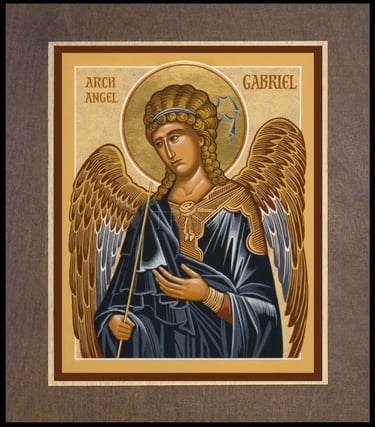

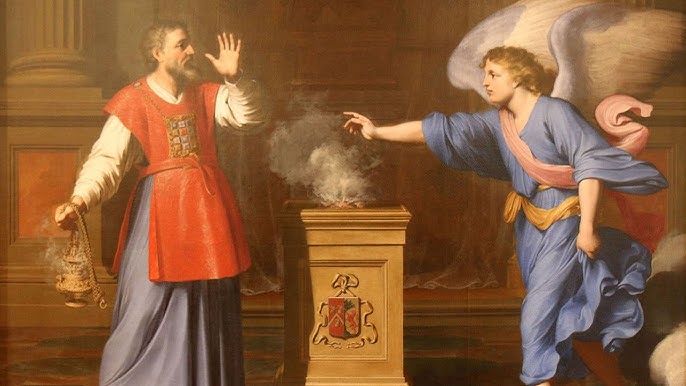



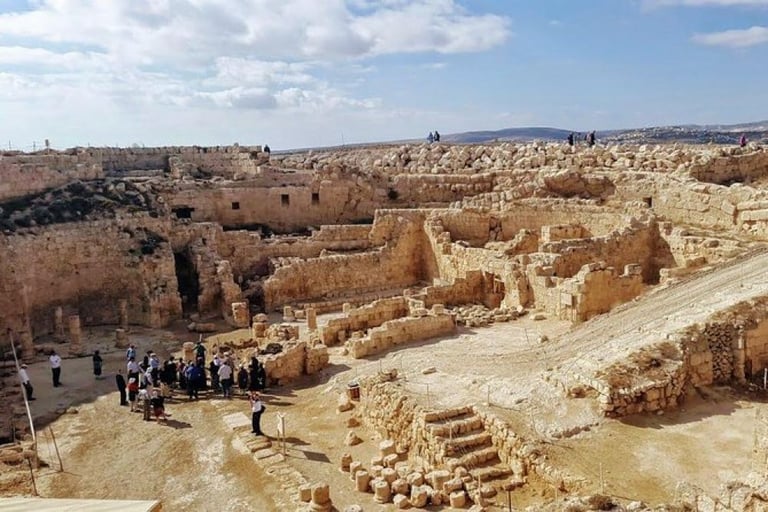

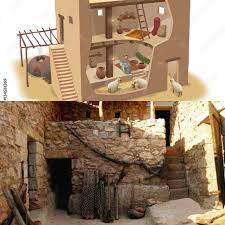

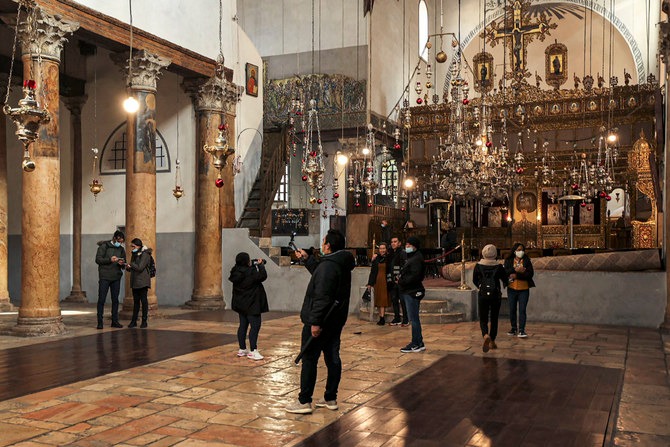

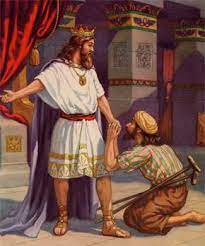

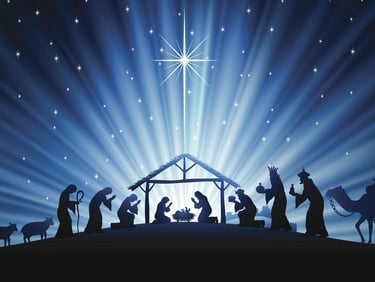



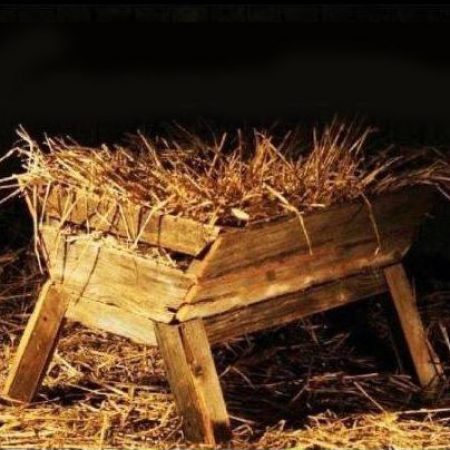

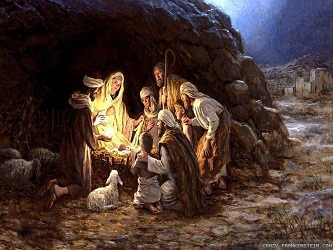

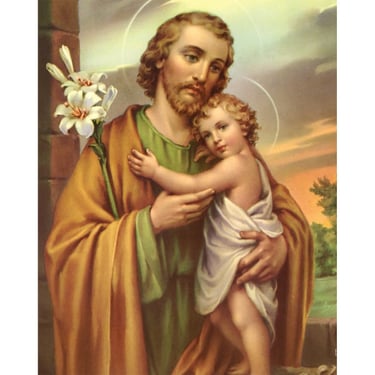



Please see these articles for more in-depth information:
